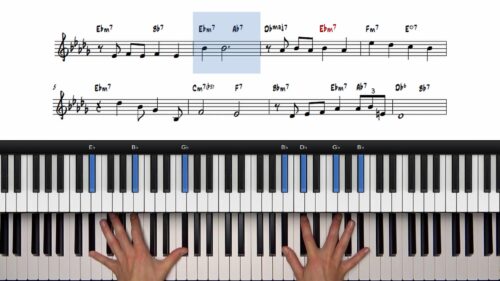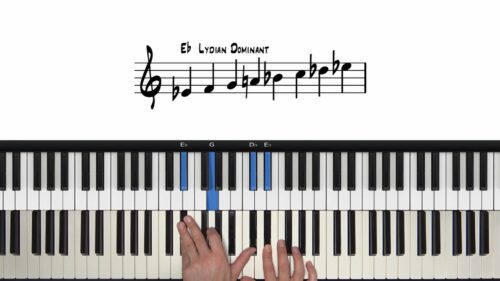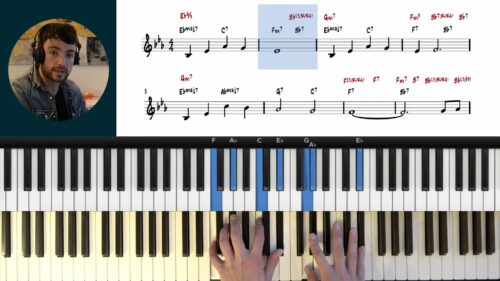“My Foolish Heart” Beegie Adair Voicings & Arrangement
Welcome to this in-depth jazz piano lesson where we analyse the chord voicings and arrangement techniques used in “My Foolish Heart”, performed by legendary jazz pianist Beegie Adair.
This tutorial focuses on Beegie Adair’s nuanced approach to reharmonisation, melodic phrasing, and expansive voicing techniques.
Through detailed breakdowns of each chord and phrase, you’ll learn how to interpret and arrange “My Foolish Heart” using rich, expressive voicings in the style of one of jazz’s most elegant interpreters.
Beegie Adair Playing Style
One of the hallmarks of Beegie Adair’s style is her masterful use of all the register of the piano. Rather than voicing chords in a compact range, she frequently opens up her voicings by doubling melody notes in the upper register and spreading chord tones across both hands.
We explore how these voicings are layered with chord tones and how the top note of each voicing is often mirrored an octave higher.
Beegie Adair Sus Chords & Dominant Alterations
We highlight how Beegie uses suspended dominant voicings, such as Eb9sus resolving into Eb7b9, to create harmonic tension and release.
One of the most interesting techniques is voicing suspended 4ths under a major 3rd in the melody — a subtle but effective source of harmonic colour and variety.
Triadic Overlays & Passing Chords
Beegie’s approach includes upper-structure triads like Db major over B7, forming rich altered dominant voicings such as B13#11. These overlay techniques provide a modern and complex sound.
Passing chords, chromatic movement, and rootless voicings are all key tools in her toolkit, and we examine how these techniques guide transitions between chords like F-7 and Bb-7.
Expressive Phrasing & Rhythm
A final defining element of Beegie Adair’s style is her rubato approach. She stretches harmonic moments, lets the voicings breathe, and then re-engages with the melody in tempo. This creates contrast, emotional pacing, and a vocal phrasing style that makes her ballad playing so memorable.
You’ll learn how to apply this concept of “time stretching” to your own performances for more dynamic expression.
Practice Tips
-
Practice 36251 Progressions: Practice C-7 to F7 to Bb-7 to Eb7 to Abmaj7 in root position, then explore spread and rootless voicings for each chord.
-
Play Suspended Voicings: Try playing Eb9sus resolving to Eb7b9 to understand how Beegie creates tension and resolution.
-
Layer Melody Using Octaves: Double the top note of your voicings an octave higher to emulate Beegie’s orchestral texture.
-
Learn Upper Structure Triads: Practice building dominant voicings by playing triads like Db major over B7 for altered dominant sounds.
- Use Rubato For Emotional Impact: Practice stretching time between voicings and melodies to create expressive phrasing in your ballad playing.






